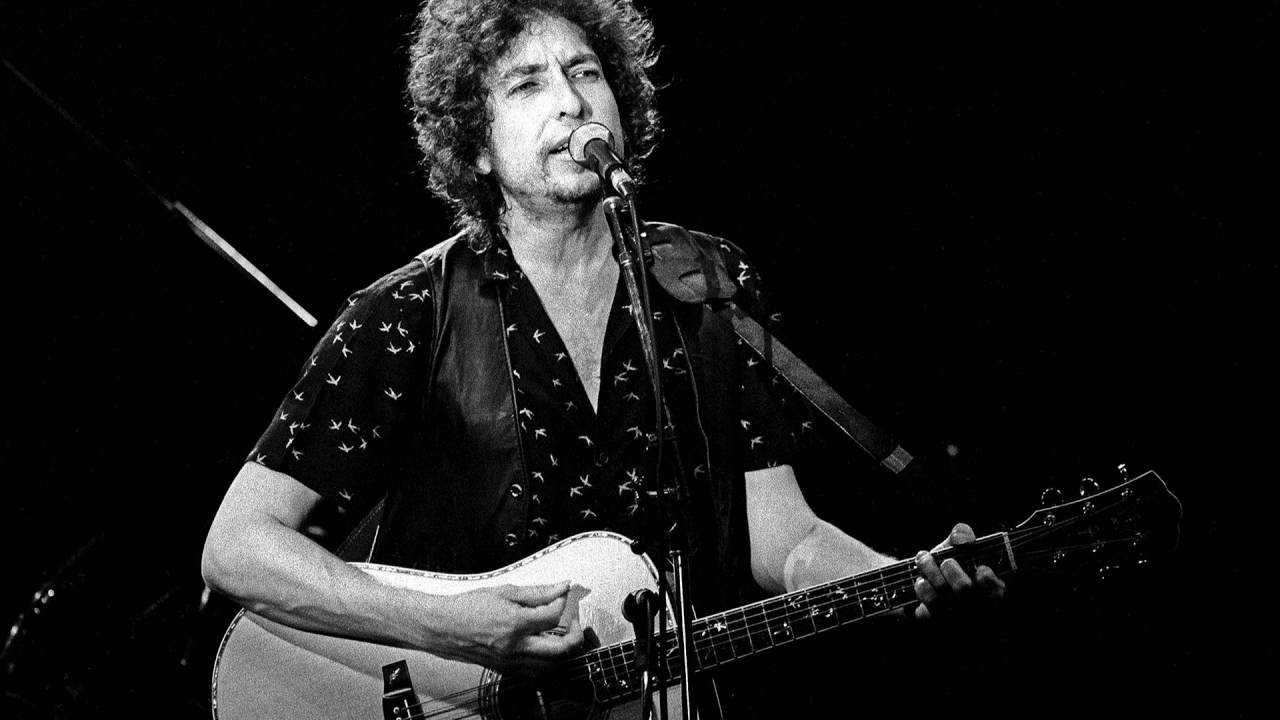It started with a cross someone threw on stage at a show in San Diego. For Bob Dylan, his gospel years are derided by some, overlooked by others. His born-again faith isn’t cool in the same way his hound’s-tooth suit-wearing 60s period, his tours with The Band, the Grateful Dead, or his elder statesman of rock periods are. So people skip over them, jumping from “Isis” to Infidels with the flick of a wrist.
As Bob Dylan’s The Bootleg Series Vol. 13: Trouble No More proves, it’s their loss.

This new set – available in a variety of formats, including a deluxe edition with four CDs and two full concerts – shows Dylan at one of his many peaks, playing live on stage with a passion and energy, singing some of his most powerful songs, with a killer backing band to boot: keyboardists Spooner Oldham and Al Kooper, guitarist Fred Tackett, and Jim Keltner on drums, among others.
So with a tight backing band and a backing choir, Dylan went off into a powerful period of music.
The songs here – generally taken from live concerts, although there’s a few outtakes on the deluxe set – show him twisting and turning through allegorical lyrics, leaning into tight melodies and ripping into some of the hardest rocking music of his career.
For example, take the version of “Solid Rock” on the first disc, recorded live in 1979. It’s a chugging rocker with a stomping Bo Diddley beat and leads into a tasty guitar solo by Tackett. Meanwhile, “Gotta Serve Somebody” turns into a juggernaut with guitar breaks, a shouting choir and the band building up the tension until Dylan’s vocals reach a fever pitch.
Elsewhere, it shows other sides of Dylan. His reading of “When He Returns” is him gently strumming a guitar while Oldham accompanies him on piano. It’s not as far removed as you’d think from his 1966 sets included on last year’s Bootleg Series release.
But as the set goes on, it also shows Dylan’s trait for re-evaluating his work and changing things on the fly.
On disc two, “Solid Rock” is presented as a slow burner, letting the choir’s singing leap out and the guitarists trade bluesy licks. In the two years between performances, Dylan’s done a 180 with this song, but without taking away any of the song’s power. Conversely, the 1981 version of “Gotta Serve Somebody” is sped up and crashes around with an energy you’d never suspect the earlier version had.

Indeed, the second disc has many of the set’s highlights: an incredible version of “The Groom’s Still Waiting At the Alter” where Carlos Santana sits in and trades licks his band, a swaggering version of “Shot of Love” where he shouts and yells while the band lurches around behind him. And there’s a generous helping of unreleased songs, too: “Ain’t Gonna Go to Hell For Anybody,” “Ain’t No Man Righteous, No One,” and “Blessed Is the Name,” all of them pointed, while remaining distinctly Dylan.
So yes, the music is impassioned, and yes, preachy.
That’s kind of the point of gospel, isn’t it? To celebrate the lord and to maybe save a few souls along the way. Indeed, he used to deliver some real fire and brimstone sermons between songs; they’ve been deftly edited out of the concerts included on the deluxe editions.
At the same time, some of the earlier gospel tunes are pointed in a way his later one aren’t: “Ain’t No Man…” is direct, almost judgy in it’s tone. As these tours continued, Dylan’s approach softened: he started mixing his old songs into his sets in interesting new arrangements – sadly none are included on the 2-CD edition – and newer songs took a more nuanced approach. By the end of 1980, he was writing songs which sounded like the old Dylan: “The Groom’s Still Waiting At the Alter,” for example, is represented here in a ripping version featuring Carlos Santana on guitar.

Overall, this is the most important Dylan release in years, easily since Another Self Portrait.
Why? Because it takes a maligned, overlooked area and softens the hard edges to show what made 1979-1981 special for Dylan’s music, particularly on stage. This was the realm of bootlegs and tape hoarders, the kind of people who would listen to anything Dylan’s put his voice to. Now it’s out for everyone to dig into and enjoy. There’s a lot, but people with an open mind will find some of the strongest live performances of Dylan’s long career. Recommended.


